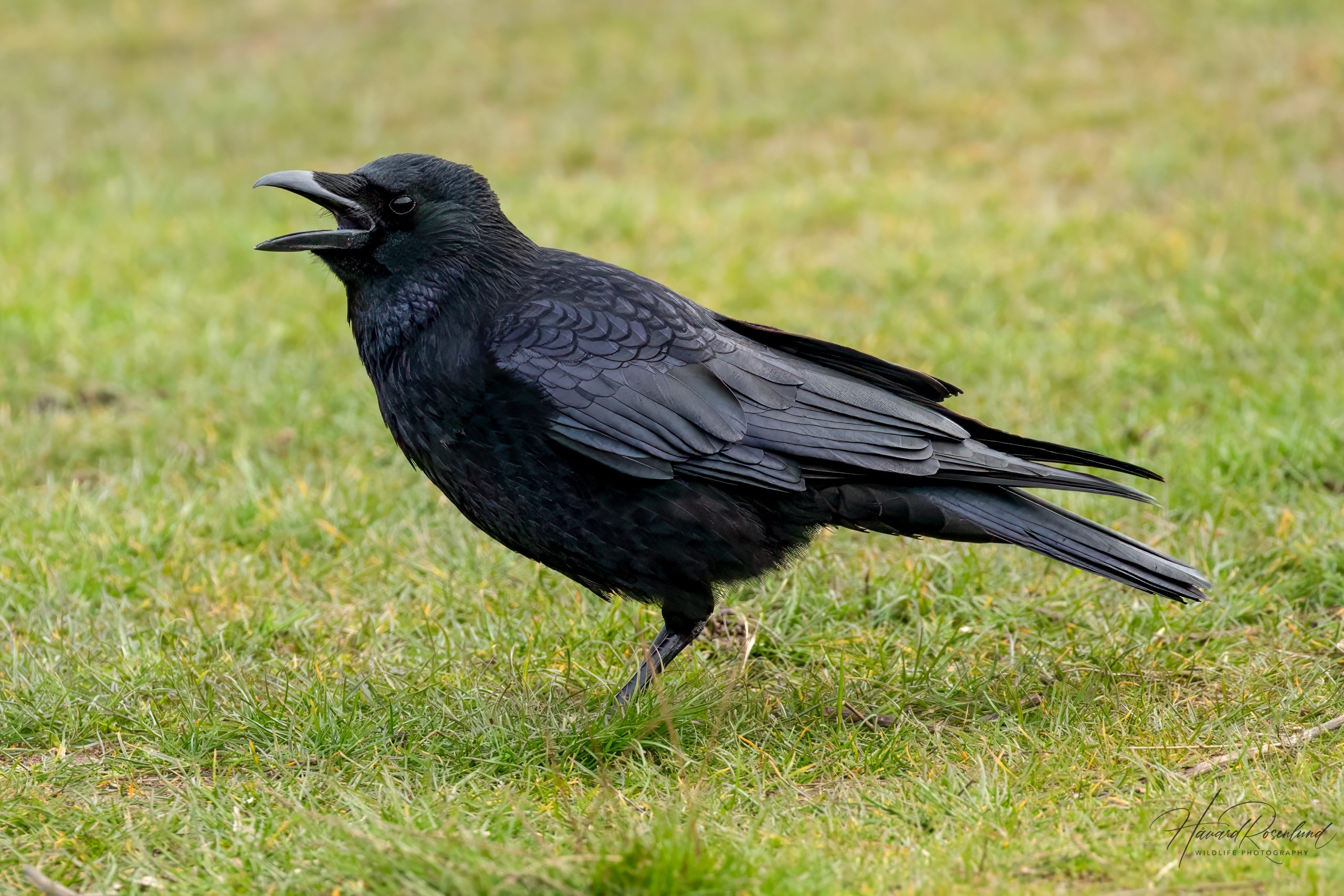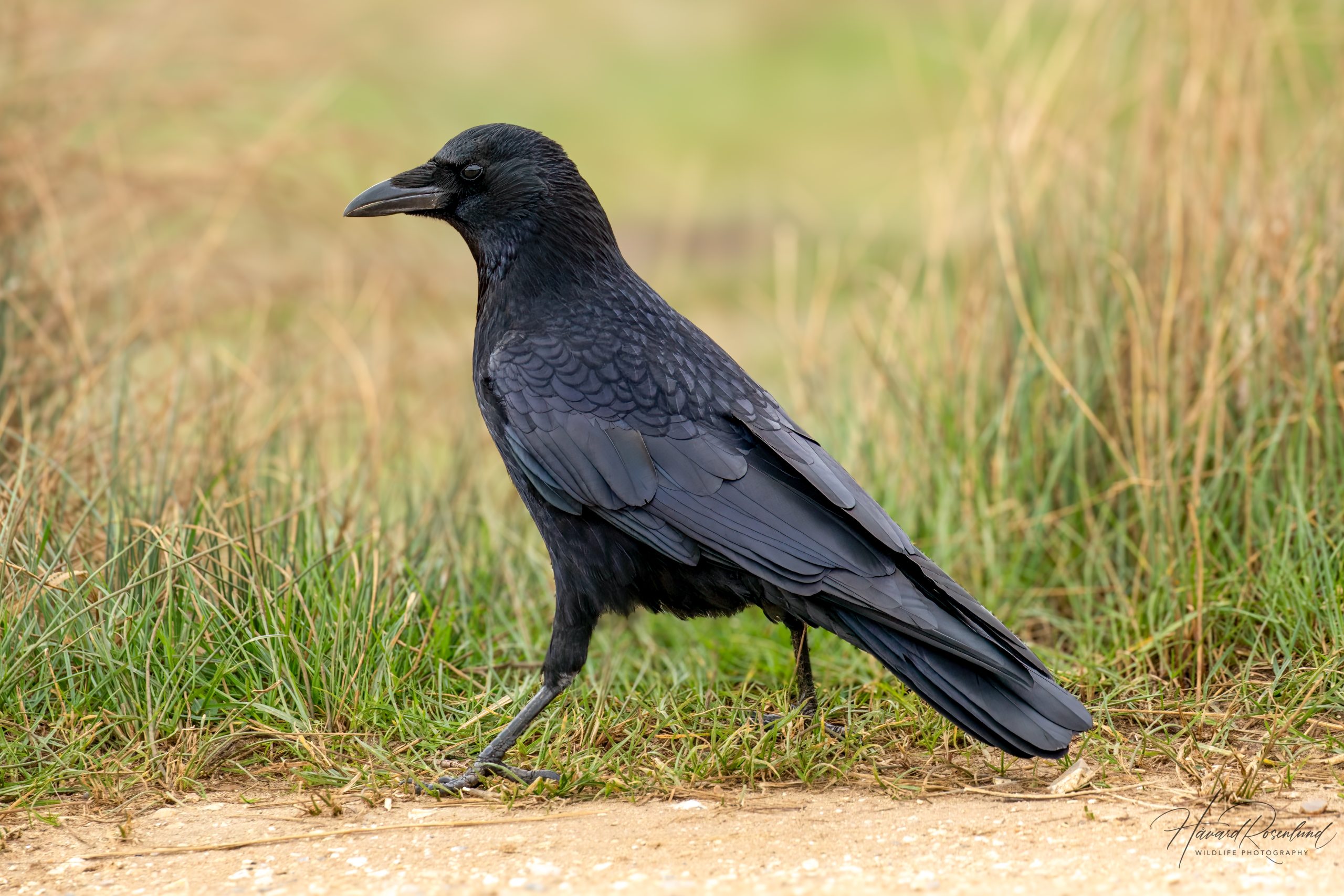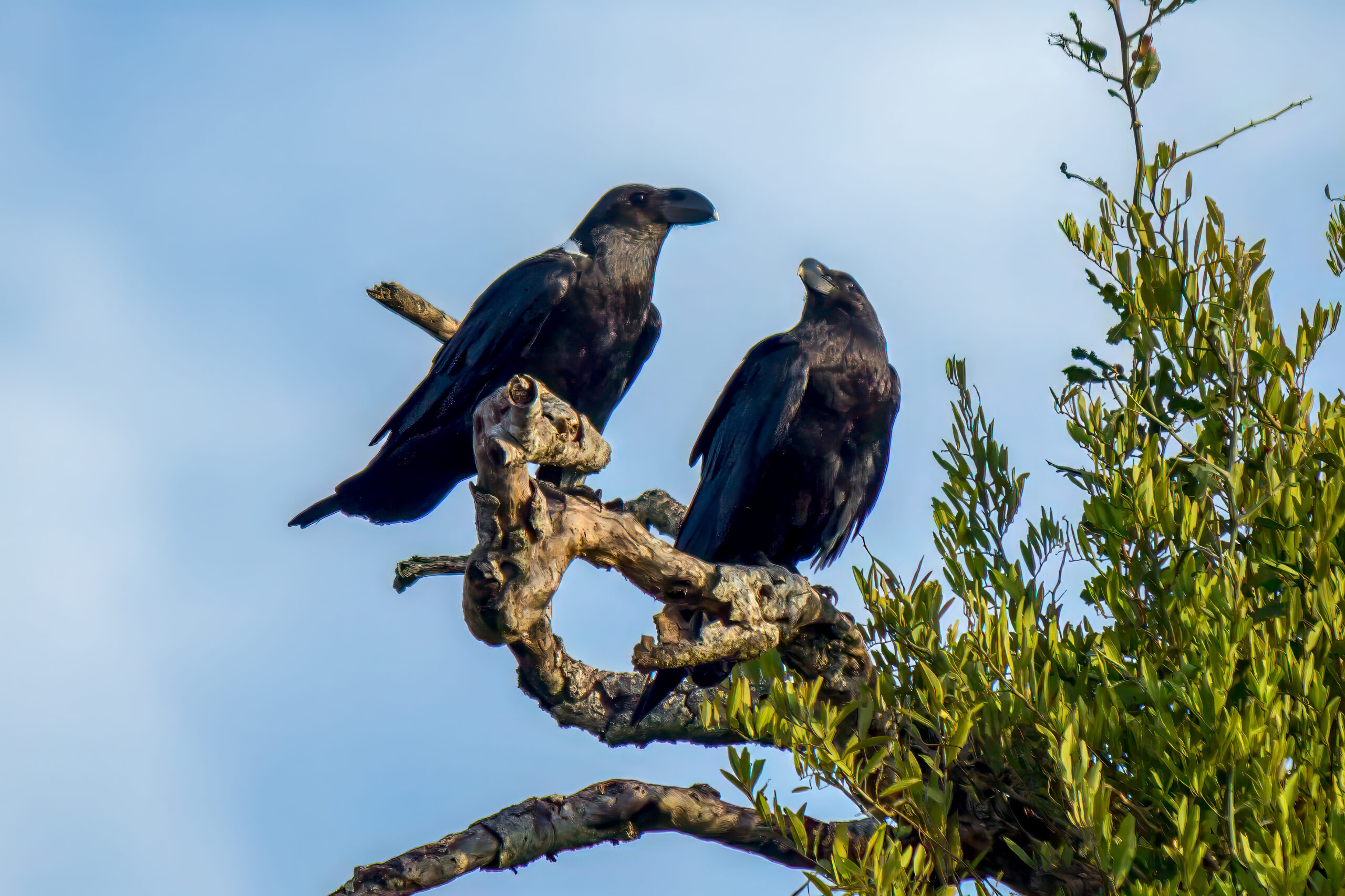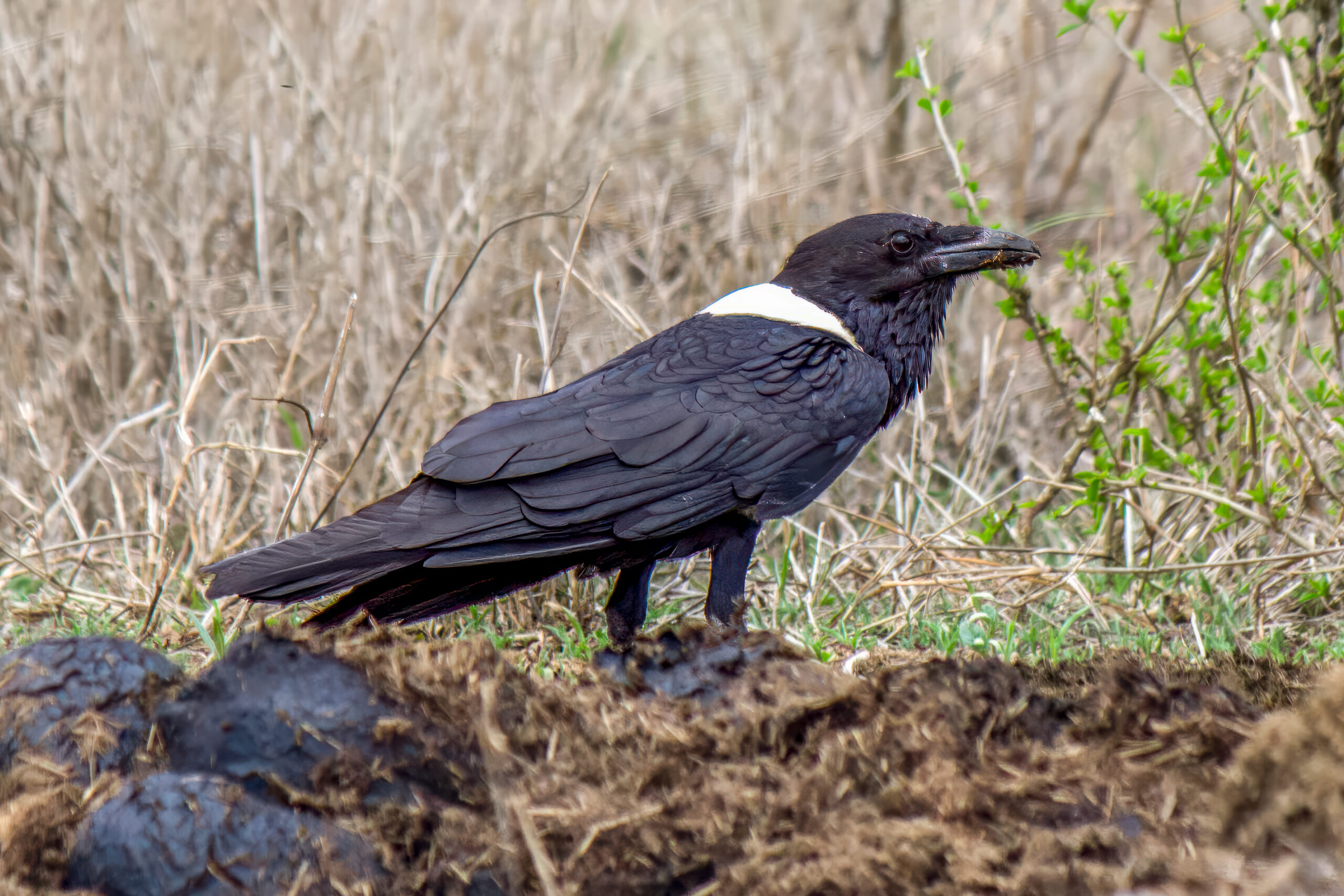Description
The carrion crow (Corvus corone) is a medium-sized crow native to western Europe and eastern Asia. It measures about 48-52 cm (18.9-20.5 in) in length, with a wingspan ranging from 84-100 cm (33-39 in). Adults are entirely black with a glossy sheen, which distinguishes them from the hooded crow (Corvus cornix) that has a grey body and black head, wings, and tail. These two species were previously considered to be subspecies of the same species. However, genetic analyses have led to the carrion and hooded crows to be separated into two distinct species.
Both species meet and hybridize to some extent where ranges overlap, but hybrids are not as well adapted to survive as non-hybrids. In Europe, the carrion crow is found in Western Europe, as well as England and Wales in Great Britain, whereas the hooded crow is found in Northern, Central, and Eastern Europe, as well as Scotland and Ireland. The carrion crow is also found further East from where the range of the hooded crow ends in Central Asia. Thus, the distribution of the carrion crow is disjointed and split by the hooded crow.
Diet & habitat
Carrion crows can be found in various habitats, including urban areas, woodlands, farmlands, and coastal regions. They are highly adaptable and opportunistic feeders. Their diet includes carrion, insects, seeds, fruits, small mammals, eggs, and even garbage in urban environments. They exhibit remarkable problem-solving skills when foraging, often using tools or dropping hard-shelled prey from heights to break them open.
Intelligence & social behavior
Carrion crows are known for their high intelligence and complex social behaviors. They can solve puzzles, use tools, and even recognize human faces, remembering those who pose threats. These crows often engage in cooperative breeding and social play, demonstrating strong familial bonds and social structures. They communicate using a wide range of vocalizations and body language, which helps maintain their social cohesion. Carrion crows are also known to engage in playful activities, such as sliding down snowy rooftops or playing catch with each other.
Migration
Carrion crows are largely sedentary, meaning they do not undertake long migratory journeys. However, some populations in the northernmost parts of their range, particularly in Asia, tend to move southward during harsh winter conditions to access more abundant food sources.
Nesting
Breeding season for carrion crows typically begins in early spring. They build large nests from sticks and line them with softer materials like feathers and moss. Nests are usually placed high in trees or on cliffs. The female lays 3-6 eggs, which she incubates for about 18-21 days. Both parents are involved in feeding the chicks, which fledge around 4-5 weeks after hatching. Young crows may stay with their parents for several months, learning essential survival skills.
Status
The carrion crow is currently listed as least concern on the IUCN Red List (where it is assessed alongside the hooded crow), indicating it is not considered threatened. Its adaptable nature and wide range contribute to its stable and possibly increasing population. However, habitat destruction and persecution in certain areas can pose localized threats.








